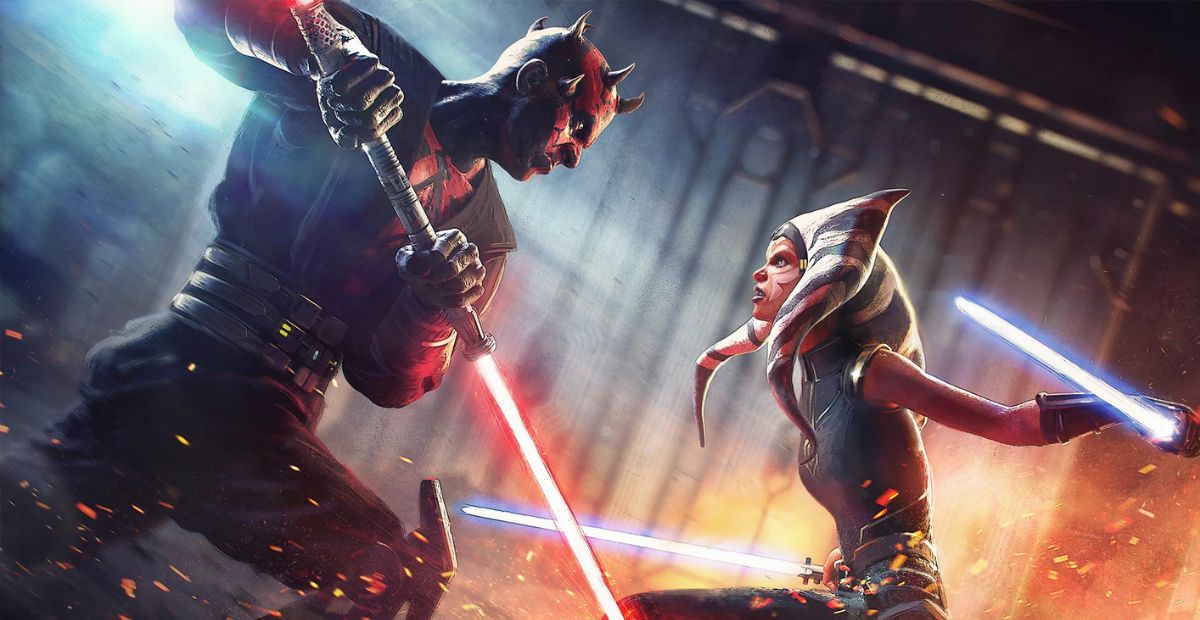We watched Darth Maul defeat Qui-Gon Jinn in the first prequel, and then Ahsoka Tano defeated Maul in The Clone Wars series. Those two duels set up an interesting question–how did Ahsoka defeat Maul when Qui-Gon couldn’t?
Much of the answer has to do with Qui-Gon and Ahsoka’s fighting styles and the circumstances of their fights with Maul.
Table of Contents
Competing Duels
In The Phantom Menace, Qui-Gon’s second duel with Darth Maul ends with the loss of his life. It occurred during the Battle of Naboo and initially with Obi-Wan fighting beside him. That Qui-Gon lost shocked fans and provided a poignant turning point in the first prequel.
In the final season of The Clone Wars, Ahsoka took on Maul and emerged victorious. In the scene from Episode 10 of Season 7, we can relive the action and drama and witness Ahsoka prevailing. Yet, it is not clear how she was able to do it.
From these competing duels, we arrive at the puzzling question as to why Ahsoka defeated Maul when Qui-Gon did not. After all, Qui-Gon was the more seasoned Jedi Master who trained Obi-Wan, while Ahsoka was a Padawan under Anakin and Obi-Wan.
Why Did Ahsoka Prevail Over Maul When Qui-Gon Did Not?
The answer has two main reasons, with the first related to fighting styles and skills. Ahsoka followed the Djem So form of lightsaber fighting that focused on “defending with solid blocks” and “immediately countering with strong counterattacks” to enhance defense and improve her offensive maneuverability. Ahsoka drew on a lightsaber combat form that was more suitable for fighting Maul.
This article emphasizes how the “aggressive and offensive” Djem So style helped Ahsoka withstand Maul and counterattack his “chaotic Juyo lightsaber form.” Ahsoka’s use of two lightsabers likewise aided her in fending off Maul’s strikes, while Qui-Gon lacked this protective element.
In contrast, Qui-Gon focused on the Ataru form of lightsaber fighting. While this is an “aggressive style” with “fast-paced” moves that could be effective, this form also entails more “acrobatics, such as somersaults and leaping strikes” that may leave one vulnerable. It also is “weaker in prolonged combat and confined spaces,” which characterized Qui-Gon’s fight with Maul (and goes with the second reason below).
Fans tend to emphasize Ahsoka’s training and battle experience too. She not only had the advantage of “kinetic fighting” but also training “in the field while being a general in the war.” These combined combat abilities helped her become a superior duelist. Moreover, we should remember that Ahsoka was a “quite exceptional Jedi despite her youth” and met adversity head-on.
Qui-Gon, conversely, spent much of his time in meditation and had retreated from his first fight with Maul. As he faced off with Maul a second time, he did not have as much active combat experience or the fighting skills that Ahsoka had.
The Circumstances of the Duels
The second main reason why Ahsoka prevailed and Qui-Gon did not have to do with the circumstances of their duels. The confined environment against Qui-Gon worked to Maul’s advantage, whereas he did not have that spacing against Ahsoka.
In their second duel, Maul intentionally drew Qui-Gon into a narrow spacing near the generator shaft. This move hindered Qui-Gon’s style of Ataru lightsaber fighting and provided Maul with an advantage. Maul aggressively sought to kill Qui-Gon in that confined area.
In contrast, Maul attempted to convince Ahsoka to join him and did not want to defeat her. We can see this in the above scene. This approach to the fight is also reflected in Dave Filoni’s comments about the episode and how the fight was taking a “toll” on Ahsoka to “compete against Maul.” So, Maul may have been holding back his full strength or not as focused on defeating Ahsoka as he was on Qui-Gon
In his fight against Ahsoka, Maul’s overconfidence also contributed to his demise and Ahsoka’s victory. Filoni also indicated how Maul’s overconfidence was his major weakness and how he underestimated his opponents. Combined, Maul held back and then when he commenced to fight fully, did not fully appreciate Ahsoka’s skills.
In turn, Ahsoka was not truly invested in destroying Maul, as shown in the video of the fight scene. Then, coinciding with the first reason above, when Ahsoka needed to fully fight, she was ready to do so and could outlast Maul.
We should remember that Ahsoka had taken on the likes of Asajj Ventress and General Grievous. She had already had similar combat circumstances and learned ways to fend off dark-side aggression.
Ahsoka Prevailed Where Qui-Gon Failed
Ahsoka combined fighting style and experience to prevail over Maul. She also fought Maul under different circumstances. Both the physical environment and the mental conditions contrasted between her duel and Qui-Gon’s fateful one.

